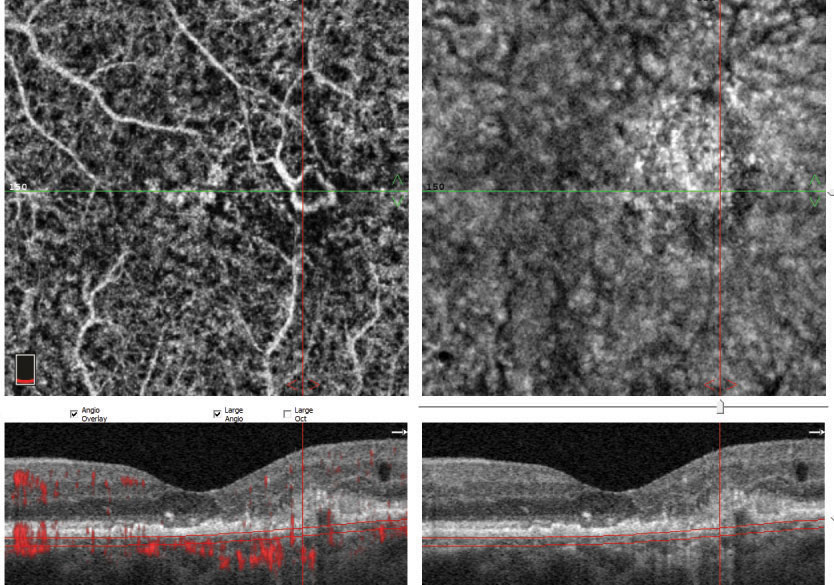 |
| OCT-A can be used as an accurate tool for identifying nAMD patients, leading to more timely anti-VEGF treatment and better outcomes. Photo: Steven Ferrucci, OD, and Jay M. Haynie, OD. Click photo to enlarge. |
Researchers recently determined that best-corrected visual acuity (BCVA) and central subfoveal outcomes after 12 months of intravitreal treatment with ranibizumab or aflibercept were similar between patients with neovascular age-related macular degeneration (nAMD) diagnosed with fluorescein angiography (FA) or indocyanine green angiography (ICGA) and those diagnosed with optical coherence tomography angiography (OCT-A). The latter has become increasingly accepted as a noninvasive imaging method for visualizing retinal and choroidal perfusion since it’s able to provide a high-resolution display of the vasculature without intravenous contrast agents and dyes that are a constraint of traditional imaging modalities.
The real-world, parallel-group study included 72 nAMD patients diagnosed with either FA or ICGA and 73 who were diagnosed with OCT-A. The researchers assessed functional (BCVA) and anatomical (central subfoveal thickness reduction) gains between the two groups during anti-VEGF treatment. Patients were evaluated with structural OCT at baseline and weeks eight, 24, 48 and 52.
Overall, the mean BCVA gain at 12 months was 11.5 letters. The study found no statistically significant differences between the invasive and noninvasive imaging groups in BCVA gain or central subfoveal thickness reduction. No statistically significant outcome differences between different neovascular lesion types and the two anti-VEGF drugs were observed either.
“Our study has shown clinically meaningful improvements in visual and anatomical parameters during 12 months of treatment, independently from the chosen imaging modality at baseline, strengthening therefore the role of OCT-A as a primary diagnostic tool,” the researchers wrote in their paper. “It could be hypothesized that the widespread use of OCT-A will increase a shift in the diagnostic paradigm in nAMD toward the use of noninvasive imaging modalities.”
Lupidi M, Schiavon S, Cerquaglia A, et al. Real-world outcomes of anti-VEGF therapy in treatment-naïve neovascular age-related macular degeneration diagnosed on OCT angiography: the REVEAL study. Acta Ophthalmol. August 18, 2021. [Epub ahead of print]. |


